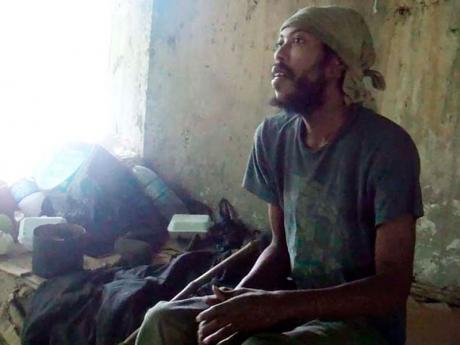MoBay's brothel, shelter bridge... where sex, poverty and hopelessness hold sway
Barrington Flemming, Gleaner Writer
Western Bureau:
Contrary to the purpose for which it was constructed, the underbelly of the concrete girder bridge along the Howard Cooke Boulevard, in Montego Bay, St James, is being used as an unauthorised shelter for the homeless and a 'romping shop' by prostitutes.
"It has been going on for years," said Fitzgerald Roach, water production manager at the National Water Commission's Western Office in the parish.
"We discovered years ago that it was being used by prostitutes, the mentally ill, drug addicts and the homeless."
When The Sunday Gleaner visited the eerie, semi-dark concrete structure near midday last Thursday, the expected buzz of activity was missing as only two of its occupants - two homeless men - were present.
However, the numerous pieces of cardboard used as beds, empty drink cartons, plastic bags and other debris strewn about was evidence of much greater level of occupancy.
FORCED TO MOVE
Ivan, who has been living under the bridge for four months, seemed quite at ease during The Sunday Gleaner's visit as he relaxed on his makeshift cardboard bed in an elevated section of the bridge.
"I grew up with my grandparents in Adelphi," said Ivan, who gave his age as 26 years old. "I did some farming of ground provisions and vegetables ... but due to a feud in the area, I decided to leave the community ... I had to live on the streets ... it hard, I don't have any of the usual things that people are used to."
Ivan has been living under the bridge since April and because of his circumstances, has no immediate plans to change his address.
Because of the absence of a bathroom and other modern conveniences under the bridge, Ivan has no choice but to bathe in the murky waters of the Montego River, where he also defecates and, when necessary, washes the few items of clothing he owns.
"I don't use bath soap, toothpaste, toothbrush, deodorant, perfume," said Ivan. "Those are luxury items I cannot afford ... it is a long time since I have, well, not used any of them."
While she does not actually live there, Jill, who has been a sex worker for several years, spends many nights under the bridge entertaining her clientele, who are mainly fishermen and drunks, though she claims she sometimes snares a businessman.
Jill, who is 38 and the mother of four children, including a 20-year old daughter, decided to venture into prostitution after a failed relationship and subsequently joined the sex workers who have been creating a red-light district at the bridge.
"It was a very awful experience ... I doan waan talk bout it," said Jill, in reflecting on her failed relationship. "Here I am ... I now sell sex. It is not what I want to do. I used to be a store clerk, so I would like to do that again. But I don't have a place to stay. I sometimes go up to Tucker, but that is not my place, I can't stay there."
Embarrassed
Jill, who described her clientele as ranging from rich, medium-class to the poor, said she did not want her children to know about her sex-selling life, but they found out, making her very sad.
"I know it is wrong," she said, as tears streamed down her face. "I want to stop but I do not know why I don't ... . I have been abused ... beaten several times ... people cuss me out and embarrass mi. Yu have a lot of demons on the streets."
Stephen Shaw, communications and public relations manager at the National Works Agency, said he was aware of the situation at the bridge, noting that a year ago, during a visit, it was discovered that three persons were living under the bridge, using the eastern abutment as a place of residence.
"From our inspection and subsequent observation, their activities have in no way affected or compromised the integrity of the bridge," said Shaw. "It is more of a social and health concern than anything else. We do not believe that anyone should be forced to live like this, and we would rather not have them there. But since they are not negatively impacting the structure, we are not forced to act to have them relocated."
Though an official of the St James Parish Council told The Sunday Gleaner that the council had tried over the years to prevent people from living under the bridge and on occasion had served them notices to leave, Montego Bay Mayor Glendon Harris said what was happening under the bridge was outside the remit of the parish council.
"There is nothing on the books to deal with this particular issue," said Harris, in explaining the decision not to intervene.
Dr Dian Dale, medical officer of Health for St James, said it was not a matter of concern for her department unless it was posing a serious health hazard.
"It is not an appropriate place of abode, but it does not fall within the remit of our department," said Dale. "Unless it was proving to be detrimental to the health of others and people filed a complaint, then we have nothing to work with."
While the municipal and health authorities are seemingly unconcerned that the use of the bridge is tantamount to quoting disaster from a public health and environmental perspective, especially during the traditional rainy months, Ivan, Jill and their 'bridge view' neighbours continue to battle nature and the environment, hoping that their one bright day is looming on the horizon.
barrington.flemming@gleanerjm.com



